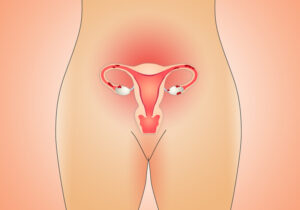Endometriosis is a painful chronic condition that occurs when tissue similar to the endometrium (the tissue that lines the walls of the uterus) begins to grow outside of it e.g. ovaries and fallopian tubes. There is painful inflammation in the surrounding tissue which results in the formation of scar tissue. Typically this leads to pain in the abdomen and lower back, usually worse during menstruation. It is particularly common in women who are well within their reproductive ages (15-49) and reportedly affects about 10% of women worldwide. In women experiencing infertility it can be as high as 30-50%1 .
.
With over 176 million women affected worldwide, endometriosis is not only an alarming issue, it is also a major cause of infertility. This has led to extensive studies focused on solving and alleviating the root causes. While there are a few courses of treatment that can help resolve the symptoms successfully and boost fertility, they include several types of hormones therapies with varying degrees of side effects, combined with pain relief but even that may only be temporary. Laproscopic surgery (seldom used now) is a definitive way to diagnose endometriosis, but can also be used to remove endometriosis2. In the event where either of these treatments are unsuccessful or only partially successful, there are limited options left to consider.
Being an oestrogen dependent condition, most of the available treatments and medication used to treat endometriosis are oestrogen–gestagen combinations; a potent hormone combination that tends to have side effects, such as menopausal symptoms. This conundrum adds to the already problematic pain symptoms. Additionally, there are the longer term effects of using analgesics also to be considered. It is vital therefore to try to opt for treatment regimes that are advantageous to the body but also that may be of greater benefit.
Acupuncture is one treatment that could provide not just pain control but reducing inflammation. While there is a lot of anecdotal evidence regarding its efficacy, there have been substantial research studies concluding that regular and consistent acupuncture treatments can help to relieve the pain of this condition.
How acupuncture helps with endometriosis?
A systematic review in 2017 on the effects of acupuncture on endometriosis and the pain it brings suggests that acupuncture does in fact have a significant effect on alleviating endometriosis symptoms. This review featured 10 separate studies involving 589 patients. The main outcome to be assessed was changes in pain levels, blood CA-125 levels (a biomarker usually elevated in endometriosis), and the rate of clinical effectiveness. Interestingly, the study revealed a unique correlation between the pain-reducing effect of acupuncture and the reduction of CA-125. While the result from this research may not be entirely conclusive, evidence points to the notion that acupuncture reduces the serum levels of CA-125 alongside the pain that comes with the condition3.
Another research conducted at Tongji University hospital indicated that acupuncture was a lot more effective than hormone drug therapy (mifepristone) in the treatment of endometriosis. As one of the more widely used medication in the treatment of the unusual growth of endometrial tissues, mifepristone helps to prevent the growth of new endometrium on pelvic organs while slowing down its general growth and reducing pain. Overall in both groups there was less pain, smaller masses and improvement in CA-125 levels. However the effectiveness rate was higher in the acupuncture group 92%, compared to 52% in the mifepristone group. This difference was also proportionate for the recurrence rate as patients treated with acupuncture reported a 20% recurrence rate as opposed to the 36% associated with drug use. It is important to note that this comparative study was conducted using 12.5mg of mifepristone orally ingested daily for 6 months and an acupuncture treatment applied to the acupoints over the same period of time. These acupoints include; CV6 (Qihai), CV4 (Guanyuan), CV3 (Zhongji), Zigong (Extra), SP10 (Xuehai), SP6 (Sanyinjiao), LV2 (Xingjian) and LV3 (Taichong).
While there may still be a lot of research required to conclusively support the use of acupuncture as a stand-alone treatment for endometriosis, evidence has shown that patients experiencing this condition may be best served with acupuncture in the long run.
References
- Endometriosis. (2019, Jan 18) https://www.nhs.uk/conditions/endometriosis/
- org. (2015, March 26) http://endometriosis.org/treatments/
- Xu Y, Zhao W, Li T, Zhao Y, Bu H, Song S. Effects of acupuncture for the treatment of endometriosis-related pain: A systematic review and meta-analysis. PLoS One. 2017;12(10):e0186616. Published 2017 Oct 27. doi:10.1371/journal.pone.0186616
- Health CMi. Acupuncture beats drug for endometriosis. (2017, July 11) https://www.healthcmi.com/Acupuncture-Continuing-Education-News/1770-acupuncture-beats-drug-for-endometriosis-relief
